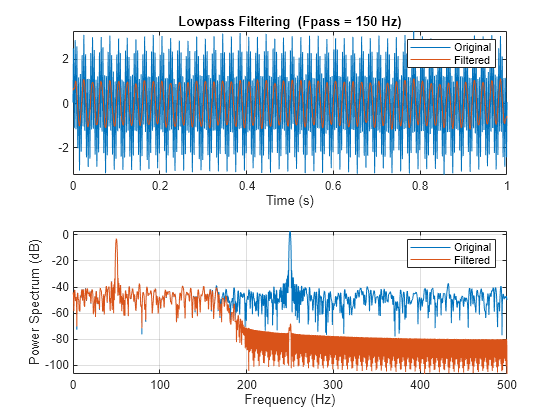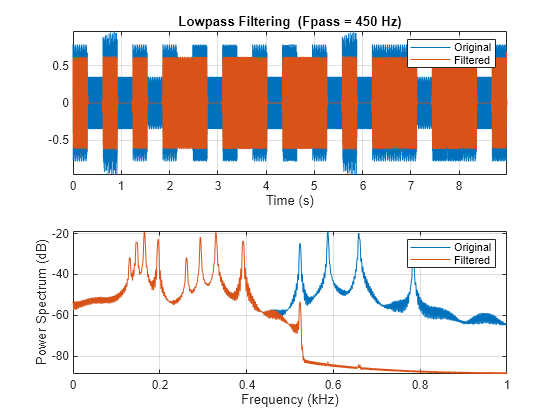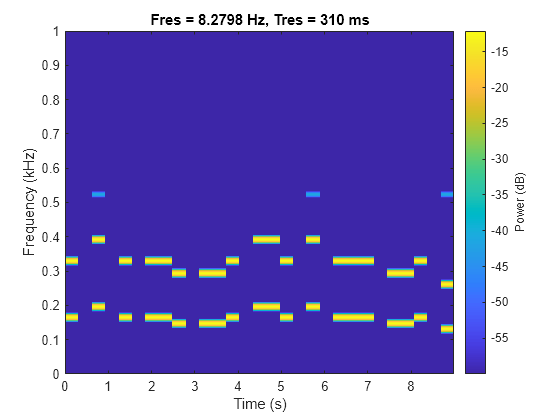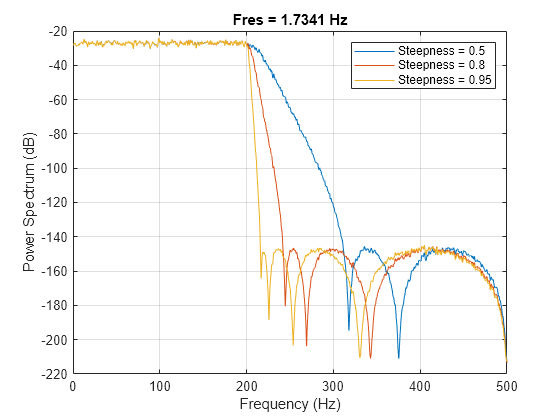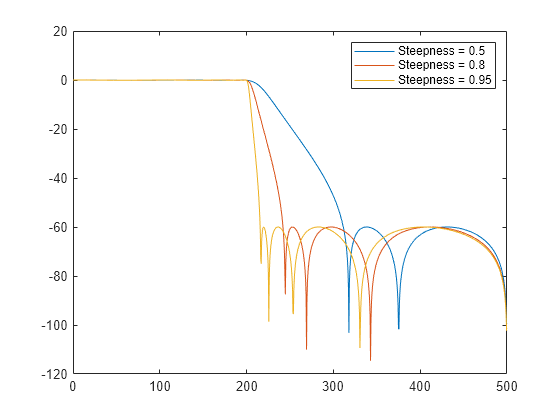lowpass
Lowpass-filter signals
Syntax
Description
y = lowpass(x,wpass)x using a lowpass filter with
normalized passband frequency wpass in units of
π rad/sample. lowpass uses a
minimum-order filter with a stopband attenuation of 60 dB and compensates for
the delay introduced by the filter. If x is a matrix, the
function filters each column independently.
y = lowpass(___,Name=Value)
[
also returns the y,d] = lowpass(___)digitalFilter object
d used to filter the input.
lowpass(___) with no output arguments plots
the input signal and overlays the filtered signal.
Examples
Input Arguments
Name-Value Arguments
Output Arguments
More About
Version History
Introduced in R2018a
